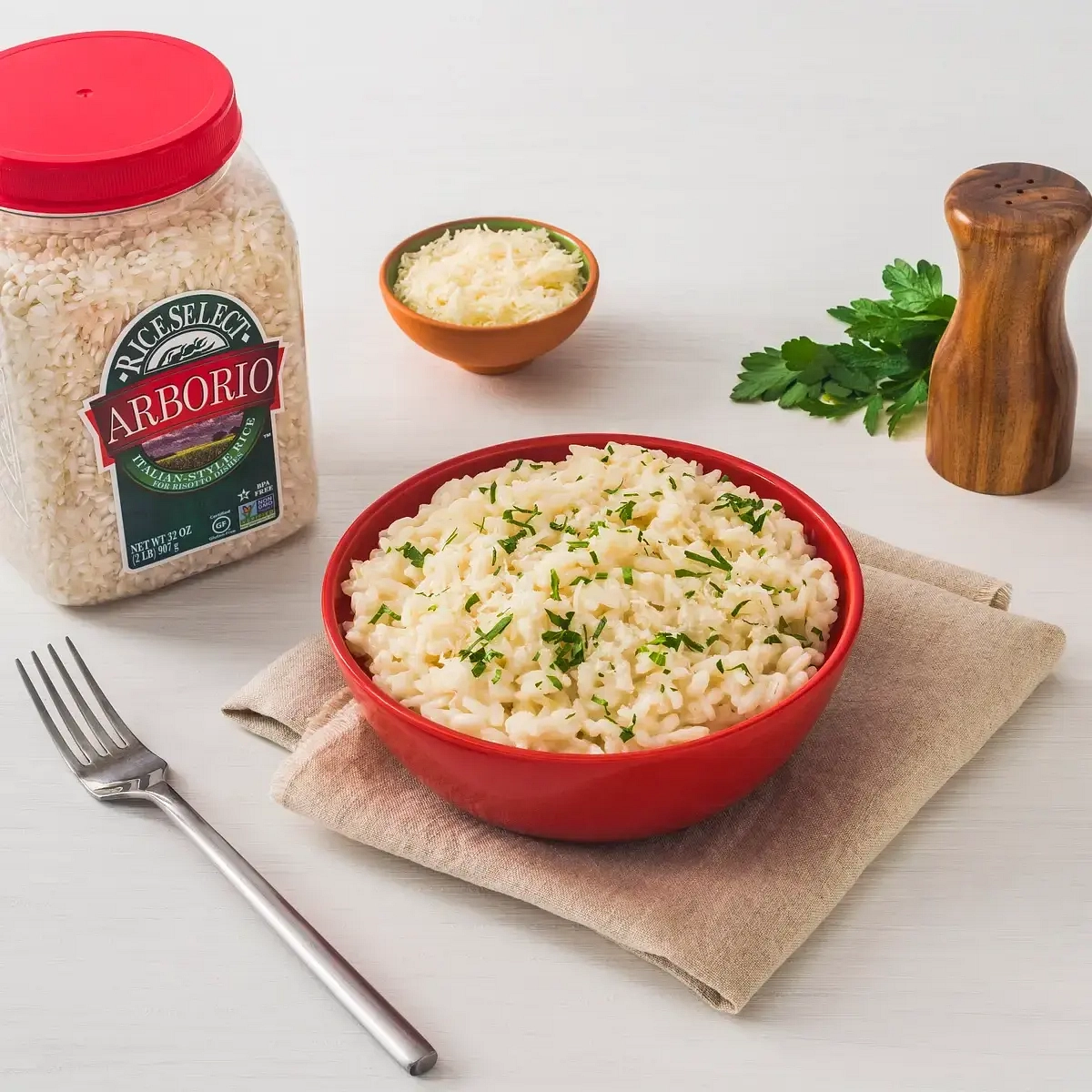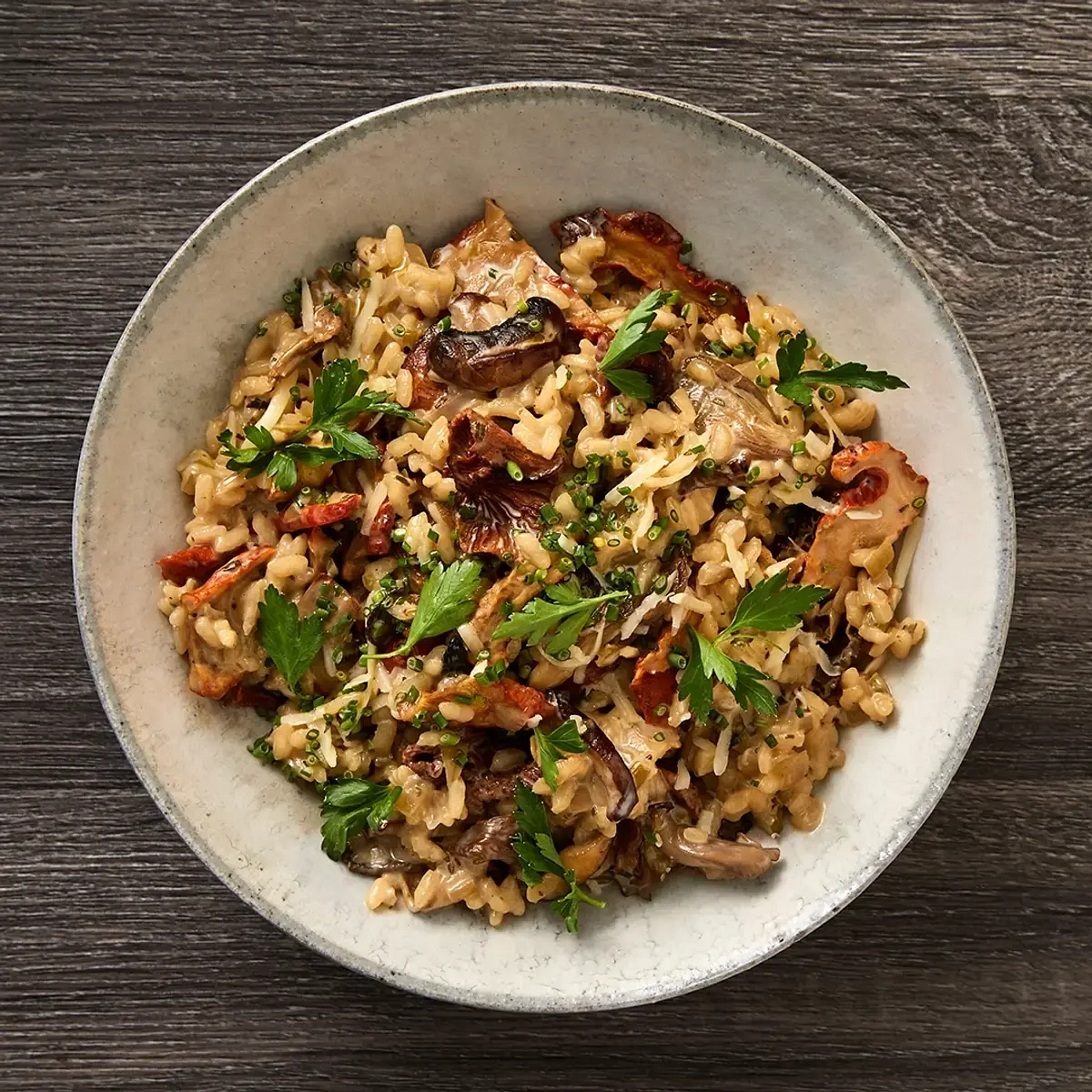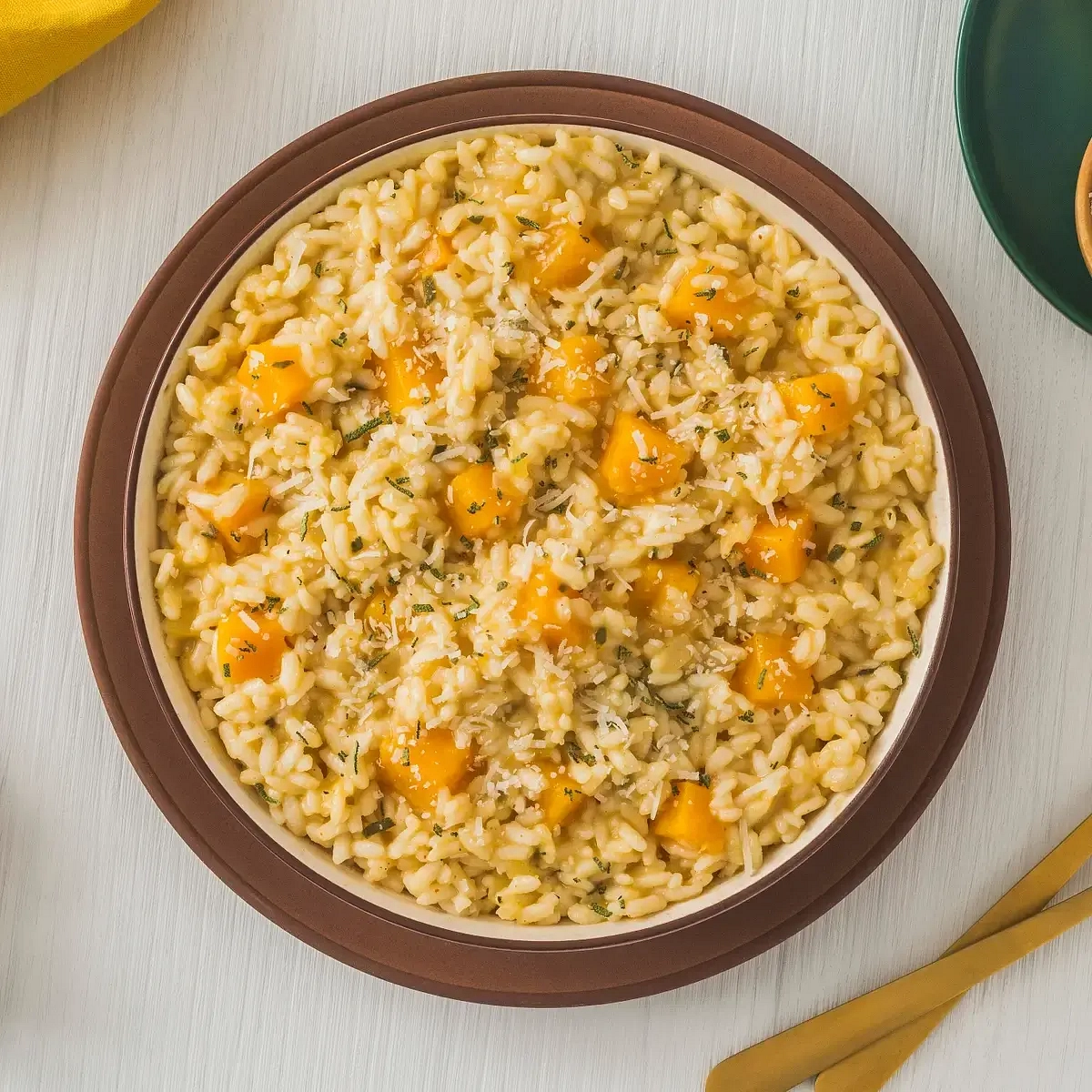So, what rice do you use for risotto? To achieve the creaminess of a truly great risotto, you need a short- or medium-grain variety of rice that is plump and high in starch, such as arborio, carnaroli or vialone nano. As the rice cooks in the broth, it will slowly release its starches, yielding an entrée or side that’s gloriously fluid, creamy and satisfying.
Much easier to prepare than you might think, risotto is a delicious canvas for a number of fresh, tempting ingredients. A dish that you can flavor simply with parmesan, risotto is also an ideal spot to feature fresh seafood, seasonal vegetables, spicy sausage and more. Learn how to make risotto the way any nonna would — with rice that never disappoints — and make this homey Italian dish a part of your regular routine!
What Makes Great Risotto Rice?
Like so many classic Italian recipes, great risotto is a simple dish that, when executed correctly, inspires awe. Still, it might surprise you to learn that the only true secret to making great risotto is starting with the right rice!
When choosing a risotto rice type, opt for short- or medium-grain rice that is plump and high in amylopectin starch. Unlike fluffy types of rice, such as basmati, which are lower in starch and remain light and separate when cooked, risotto rice is prized for its starch content (which is why it should never be rinsed!).
Contrary to popular belief it’s the rice’s starch content, not cream, that lends delicious risotto is distinct texture. As the rice cooks gently in warm broth, it releases its starch, thickening the liquid. Eventually, the result is cooked grains with a slightly al dente, or firm, center, all held together by luscious, creamy sauce.
Besides being high in starch and remaining al dente when cooked properly, the best rice for risotto also has a high absorption rate.
This means that it absorbs liquid and flavor from the broth and wine its cooked in. This quality leads to savory rice with plenty of flavor in every grain, and a dish that's deeply seasoned and never bland.
When choosing the right rice for risotto, you may encounter the term superfino. This name is given to the highest-grade Italian risotto rice, prized for its starch content and texture. Arborio, and carnaroli rice are superfino-grade types of rice.
Popular Rice Types for Risotto
Arborio
Pearly white and oval-shaped, arborio is a medium-grain type of rice that is rich in amylopectin starch. The most widely available rice used to make risotto, it is named for the area in Italy where it was first cultivated, though it is now also grown in the United States. With the proper technique, arborio rice makes creamy risotto that is soft, silky and plush.
Carnaroli
Grown in northern Italy, carnaroli is sometimes referred to as “the king of risotto.” Plump and medium grain, this type of rice has a higher starch content than arborio. It also has a combination of starches (both amylopectin and amylose) which allow it to hold its shape when cooked. Carnaroli tends to be a little firmer than arborio.
Vialone Nano
Hailing from Italy’s Veneto region, vialone nano rice has fat, round grains that are rich in both amylopectin and amylose starches. Classified as semifino, vialone nano is a medium-length rice that can be used for risotto, soups, and other dishes.
Making Risotto with Other Types of Rice
You read it here first — starchy, short- and medium-length rice varieties are best for making risotto! So, what should you do when that’s not what you have on hand? Here’s what you need to know.
- When making risotto, the goal is to have the rice release its starches as it cooks, resulting in a smooth and delicious dish. If you don’t have arborio on hand, try another starchy, short- or medium-grain variety, such as sushi rice, bomba or Calrose.
- Can you make risotto with jasmine rice? In short, not very well. The qualities that make jasmine rice so appealing — its long, slender grains and sweet aroma — are not well suited to risotto. Similarly, basmati is a poor choice here. Neither of these types of rice have enough starch to make a successful risotto.
- If you only have regular white rice on hand, you can make a dish that is similar to risotto but not exactly right. Less starchy than arborio, carnaroli and vialone nano, white rice won’t become velvety and creamy when used in a risotto recipe.
Why Arborio Is the Best Rice for Risotto
Readily available, high quality and dependable, arborio rice is a plump grain that stays al dente when cooked and is loaded with amylopectin starch — the key to making creamy risotto. Versatile, budget-friendly and delicious, arborio is a must-have when tackling this Italian culinary classic in your kitchen.
For risotto that causes a stir, reach for the distinct red cap of RiceSelect® Arborio Rice! Premium rice that’s Non-GMO and naturally gluten-free, RiceSelect® Arborio Rice has a subtle flavor that pairs well with anything you can think of and a gorgeous texture that will whisk your tastebuds off to the bel paese. Find it in store at your favorite supermarket, as well as online, and make a meal that wows!



